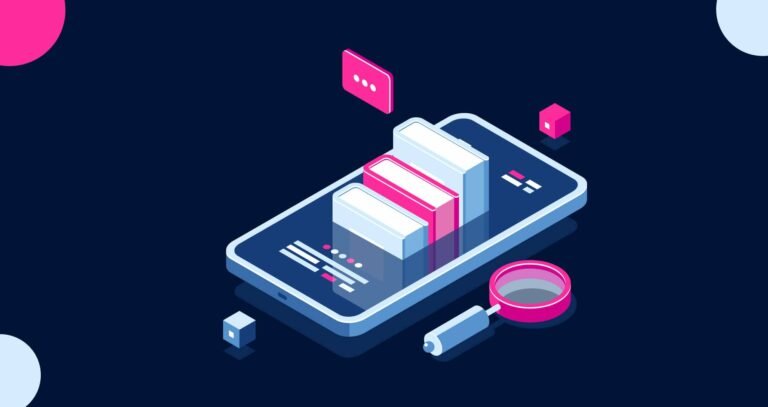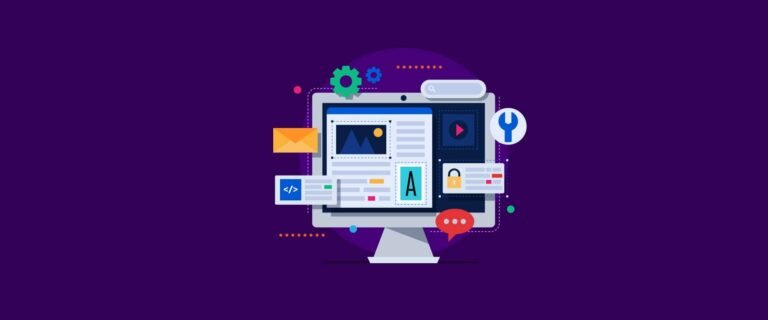Breathe new life into corporate training with microlearning
When microlearning for corporate training was first developed, there was a lot of scepticism surrounding the method. Many people believed it was nothing more than a fad and wouldn’t provide good outcomes in the long run. However, the doubters have been proved wrong, and microlearning is now a staple practice yielding terrific results in many companies.
The main reason why business leaders apply this approach is to ensure maximum knowledge retention during their programs. There’s a wide variety of microlearning courses specifically designed to enhance employee training. They all achieve the same goal – greater productivity in the workplace.
But what makes microlearning so effective and conducive to skills improvement, and how exactly can you implement it in a business environment? You’re about to find out!
What Is Microlearning?
Microlearning is a method of delivering polished learning content through small information chunks as part of stand-alone modules. The modules are up to 10 minutes long, and each addresses a single learning objective.
Why Is Microlearning One of the Best Training Solutions?
The reason why microlearning is successful is simple. The method is based on the way our brain retains new information. More specifically, we memorize details better when they are presented in brief bursts with a set objective that’s easy to remember. As opposed to conventional modules that rely on a bunch of pages of tedious text, microlearning is an enjoyable, revolutionary learning experience and offers a ton of value to employee training programs. Here are the top five reasons why you should adopt microlearning in your business setting:
1. Microlearning Improves Learner Engagement
Today’s learners are plagued by a short attention span. Many people can’t focus for longer periods on their tasks, meaning that extended practice sessions aren’t suitable.
This is where microlearning modules come into play. They are short and allow the learner to zero in on the job at hand more easily and effectively. Moreover, they lead to high-quality learning.
Since humans have a limited ability to process new information, short learning improves retention by reducing cognitive load. In fact, using microlearning in the workplace makes learning transferring 17% more efficient. Therefore, if learning material is presented in information nuggets, workers’ brains are more likely to retain them and acquire new knowledge.
2 Mobile-friendly Modules
Over the past years, many companies have adopted mobile learning, increasing the importance of microlearning modules. Employees can easily access information with their tablets and smartphones, which makes this method the go-to option for organizations implementing mobile learning solutions.
3. High-quality Just-In-Time (JIT) learning
Just-In-Time learning refers to acquiring new skills or knowledge only when they are necessary. It’s also known as on-demand training and prepares employees for urgent situations that warrant fast solutions. This approach consists of quick and brief exercises that sometimes require workers to think on their feet.
As a result, microlearning is the perfect tool for introducing JIT learning to your company. Again, they comprise short modules that allow you to organize JIT activities to improve your employees’ quick thinking.
4. Microlearning for Corporate Training Offers Rapid Learning
Providing your workers with an opportunity to use their available time effectively can be crucial to your company’s success. The nuggets included in microlearning modules can help your team members fill learning gaps quickly and efficiently.
For instance, suppose your company manufactured Airsoft pistols, and one of your clients in Germany requires a presentation about a recent modification made to the sight system. However, your sales rep has been snowed under with work and hasn’t been fully familiarized with recent changes. To close this learning gap, they can use a ready-made microlearning module to bring them up to speed with the main features your client needs to understand. This way, they arrive at the meeting prepared and equipped with all the necessary knowledge.
5. Bite-sized Learning Promotes Learning Reinforcement
One of the key takeaways from the Forgetting Curve, a concept developed by Hermann Ebbinghaus, about 90% of the things people learn are forgotten within a single week. For this reason, you should find a way to reinforce your employees’ learning during this period.
One of the most effective strategies is to use microlearning activities. A bite-sized module is an ideal match for reinforcement since the knowledge incorporated can be memorized with less strain.
How Do You Develop Bite-sized Training Programs?
To address your workers’ learning needs and improve their performance, take the following steps to create bite-sized training modules:
Set Clear Intentions
Establishing easy-to-understand goals is key to formulating your microlearning strategies. For example, if you were training your team members on handling customer inquiries, you could set up a scenario-based activity. It would put your employees in situations where they learn by making decisions or performing tasks, which hones their critical-thinking abilities.
Conversely, if you want to include information nuggets based on technology that trains your technicians, you can opt for short lessons with videos or other activities that involve pieces of technology.
Organize and Analyze Your Learning Content
You also need to collect relevant learning materials and come up with a detailed outline that determines the number of bite-sized modules. Make sure to reduce the content to an appropriate amount so that it conveys the message effectively. For example, you can replace the lengthy text with engaging images.
Use Various Design Options
Design variations are a powerful asset in training your employees. Considering that many people learn through visual representations, you need to come up with a program that allows them to pick up new skills and knowledge faster. Include different colours, graphs, shapes, and videos to encourage participants during the training experience.
Using multiple design tools, your learners have a lot to gain from your training program. They get to have fun and learn at their own pace.
Break the Material into Modules
You should now divide your assembled content into bite-sized modules logically. Make sure each of the nuggets is a stand-alone unit that addresses one objective. Furthermore, your learners should be able to use the modules in whatever order they want and comprehend the material effectively.
Create the Modules and Present Them to Employees
The final step is the very development of the bite-sized programs. To do this, you need to decide on your microlearning platform. Make sure to use one that’s fully optimized and provides microlearning deployment rapidly.
After developing the modules, you need to keep track of your learners to see if the bite-sized programs are effective. Monitor the engagement, participation, as well as completion rates to measure the effects of your course.
How Can Microlearning Facilitate Insurance Training?
One of the biggest components of running an insurance business is employee training. This industry changes frequently, and organizations invest lots of money and time to stay on top of the changes. You need to pay special attention to teaching many aspects, including the following:
- Dealing with customers
- Selling various products
- Risk management
- Processes and regulations that need to be followed
What is more, when your experienced team members retire, the company is under tremendous pressure to train new staff as quickly as possible. The most efficient way to conduct employee training in the sphere of insurance is by applying microlearning for corporate training. The benefits of this methodology make it a much better choice than conventional learning techniques.
Learners rarely enjoy taking courses that extend for hours, and this also goes for employees from the insurance industry. Traditional approaches take between half an hour and 60 minutes, making them difficult to upload to mobile devices.
For instance, let’s take a look at compliance training programs. They are designed to familiarize the participants with the stringent regulations from the field of insurance. Given that organizations sometimes face severe consequences if violating these regulations, training team members on applicable rules is critical. But if the course on compliance lasts for an hour, learners wouldn’t be engaged, which is a massive risk for the entire company.
Microlearning: a better alternative.
On the other hand, incorporating microlearning in insurance training is a much better alternative that makes such content more accessible and increases retention. The bite-sized modules of microlearning courses convey the meaning quickly. Plus, the content is broken down into comprehensible nuggets that have just one learning goal. Due to these factors, your employees can retain knowledge for much longer and help your company adhere to the norms in the insurance sector.
Additionally, short microlearning modules are generally less expensive than long courses. Each module you develop can cover a specific topic, saving you the money you would spend on extended lessons.
For instance, let’s say you want to teach data security in your course. In that case, you could divide the subject into several modules, where one would handle data classification, another would cover sensitive information, and so on. Creating individual modules is much easier than dumping all the details into a huge course. Updating these modules is also relatively easy, and more understandable to learners.
How Can You Implement Microlearning in the Workplace?
Now we get to the gist of microlearning, which is providing examples of how you can integrate them with your business environment. Here are some of the most practical activities you can set up for your employees:
Assessments and Quizzes
The better managers know their team members, the better they can design their microlearning modules. Before teaching them new knowledge, a great idea is to determine what your employees already know. To do this, you can organize microlearning programs as quizzes whose purpose is to assess your learners’ existing knowledge.
Quizzes are perfect for testing your staff’s knowledge. They can be a starting point for constructing personalized microlearning modules that would bridge the gap in their skills. But don’t forget to include them throughout your training initiatives to assess and refresh your employees’ knowledge.
Microlearning Videos
You can’t do without videos, regardless of the outline of your learning module. Not only are they engaging, but they can also be more effective since many people retain information better through videos than text or sound. Accordingly, make sure that short videos are a regular part of your modules. They can demonstrate machine concepts, product features, step-by-step guides, or other informational content.
Still, don’t go overboard with videos because some learners are more engaged with audio and text and learn more efficiently through these mediums.
Infographics
It’s no surprise that many microlearning programs contain infographics. They do a great job summarizing large paragraphs using visual representations, such as images, icons, charts, and graphs. Also, today’s cutting-edge technology allows you to create motion infographics and GIFs that positively influence your employees’ attention and improve their retention. The best way to use them is when teaching your team how to apply particular skills or knowledge.
Interactive Documents
Strange as it may sound, documents can be interactive, too. In particular, interactive PDFs are extremely useful when you can’t remove text altogether from your microlearning activities. Interactive documents can jazz things up and ensure higher engagement.
You can use PDFs to link multiple resources for team members who want broader knowledge of some subjects. Of course, they can also contain links to infographics and videos to complement your materials.
Gamified Courses
If you haven’t heard about gamification, you’re missing out a lot in terms of high-quality, exhilarating learning content. You’ll find gamified courses in many successful corporations, and the reason is simple. Such courses combine learning with gaming mechanics, eliminating boredom and making learning a lot more fun.
One of the most useful aspects of gamification is the rewards system. Whenever your employees complete microlearning courses, they earn badges they can proudly show off in front of their colleagues. As a result, the workplace becomes an environment with a healthy competition that drives your staff to keep using gamification and learn new knowledge.
Take Your Employee Training to the Next Level
Using microlearning for corporate training allows your employees to use their skills regularly. They are also a terrific training strategy for you since they are time-efficient, and create ample opportunities for improving the performance of your staff.
Best of all, you can incorporate this strategy into your company with minimal effort. Just reach out to Learnsure! We offer the finest microlearning courses used by the most renowned companies in the world. Our state-of-the-art microlearning app will engage your team and quickly teach them new knowledge, helping you achieve impressive results.



